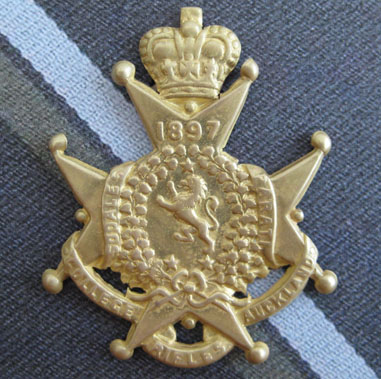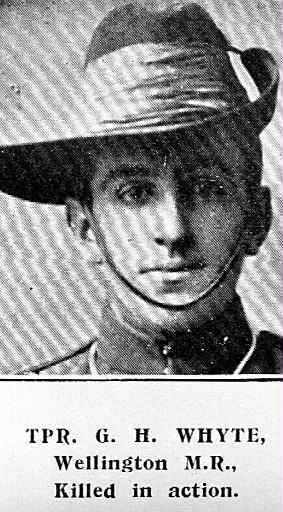
AUCKLAND COLLEGE RIFLES VOLUNTEERS
1897 - 1909

In 1897 a Colonel C. T. Major organised the formation of a military unit who's original members were recruited from secondary schools within Auckland, New Zealand. The coat of arms and subsequent cap badge of this unit took the form of a Maltese Cross, in which was embodied the Lion of the Auckland Grammar School. The crown of King's College and the three stars of St. John's College. The motto of SOLDALES PARATI (Prepared as comrades together) and a scroll at the bottom of the badge with the wording Auckland College Rifles completed the design. The illustration above shows this badge being the forerunner of the New Zealand Signal Corps badge.
This unit continued until G. O. 109 of 1909 which stated that College Rifles Volunteers (Auckland) be disbanded and reformed as a Cycle & Signalling Corps which took place on 9th March 1909. However the existing cap badge was retained.
General Sir Alexander Godley (GOC) at the time requested a universal regimental signals badge be adopted in November 1911 and to this end a design put forward by Capt. T. H. Dawson O.C. Auckland College Rifles was accepted on the 27th February 1912. This design being broadly similar to the College Rifles design but having the wording New Zealand Signal Corps at the bottom. (This badge can be seen elsewhere on this site).
I have been most fortunate to have obtained the above illustrated badge from the descendant family of one Gordon Hart Whyte an original 1897 volunteer member. Gordon Whyte fought in the South African war 1899-1902. He was sent to Gallipoli with the 10th contingent on 16th October 1914 whilst attached to the Wellington Mounted Rifles. Gordon was killed in action at the Old No 3 Outpost on the 30th May 1915 aged 35. A photo of the then corporal Whyte taken in 1905 sitting next to the O.C. Capt. T. H. Dawson can be seen below. There is also a photo of Tpr. G. H Whyte then, of the Wellington Mounted Rifles prior to his death in 1915.

.jpg)